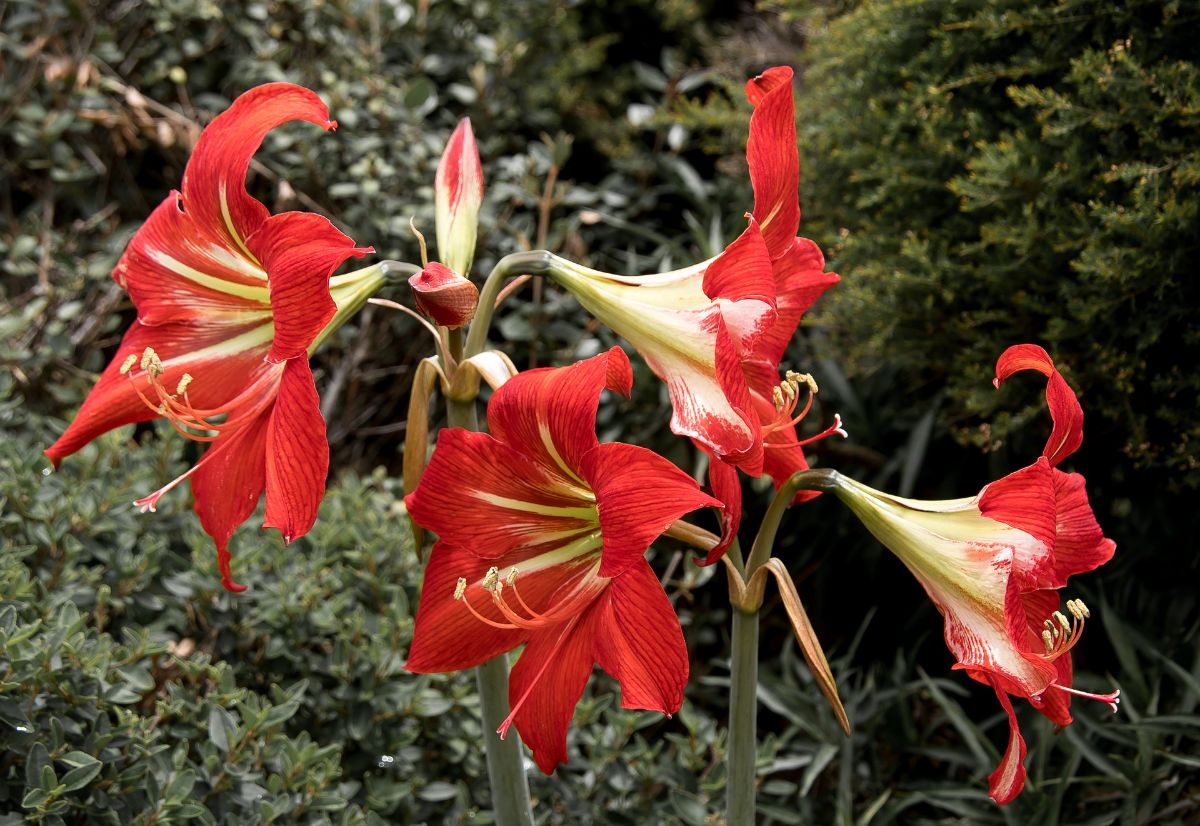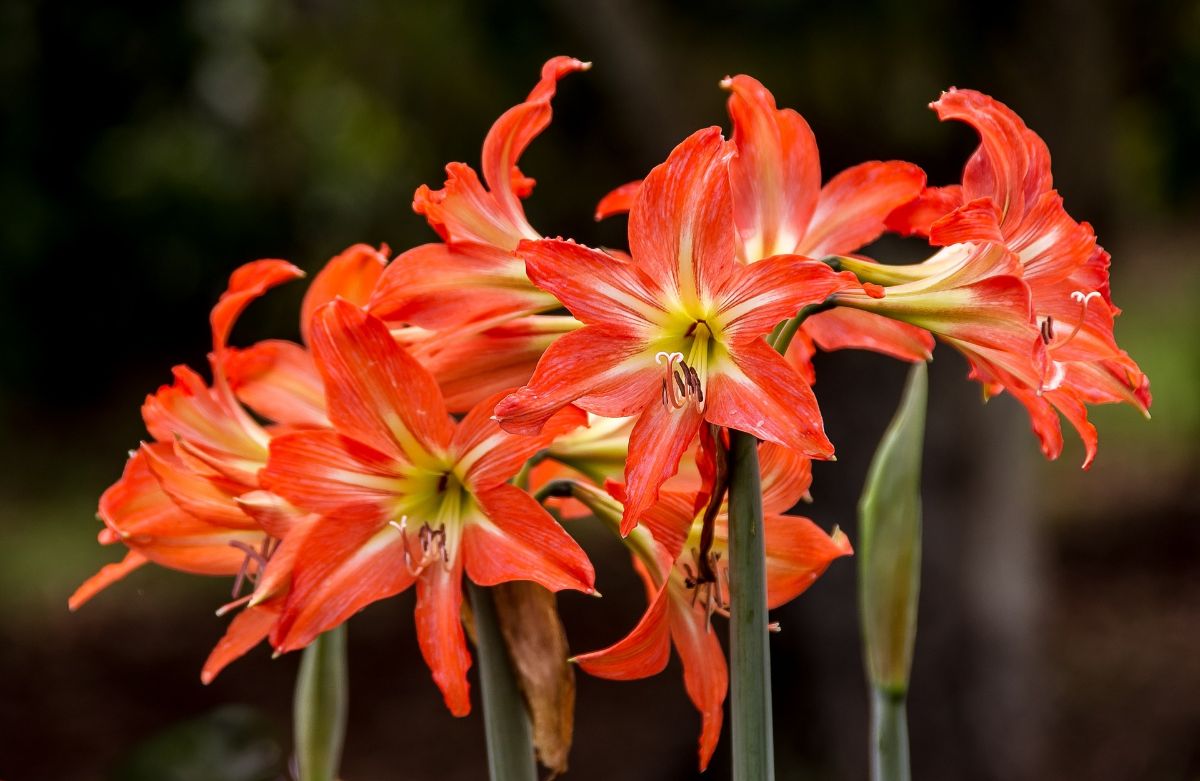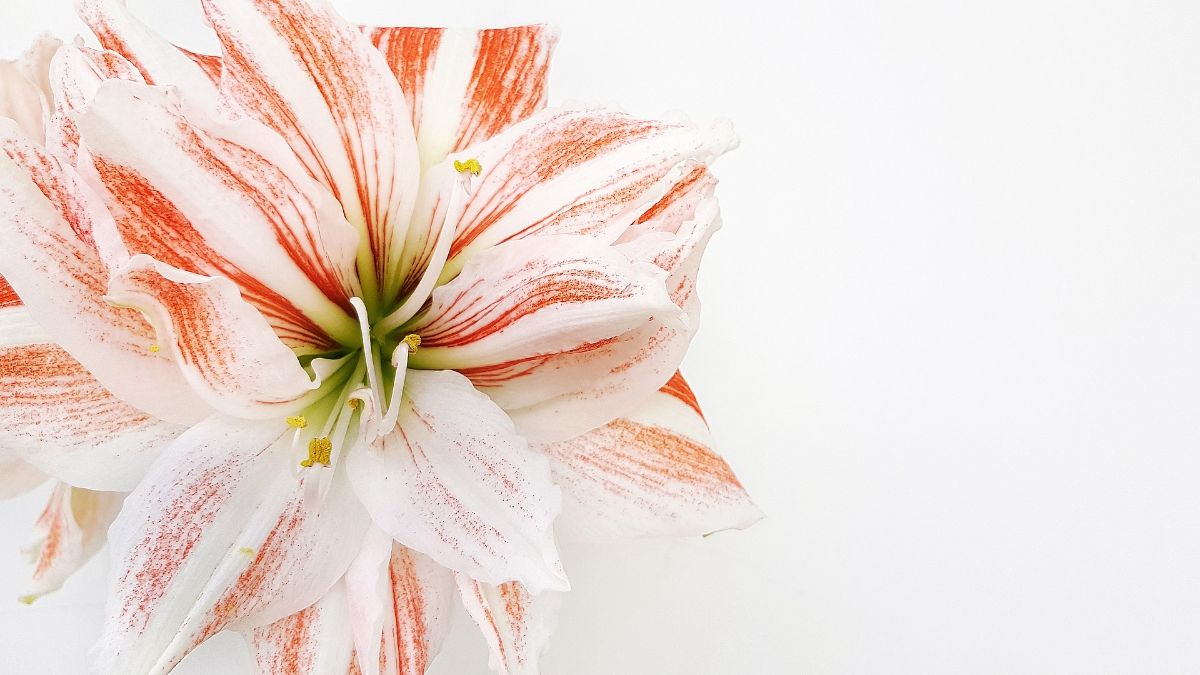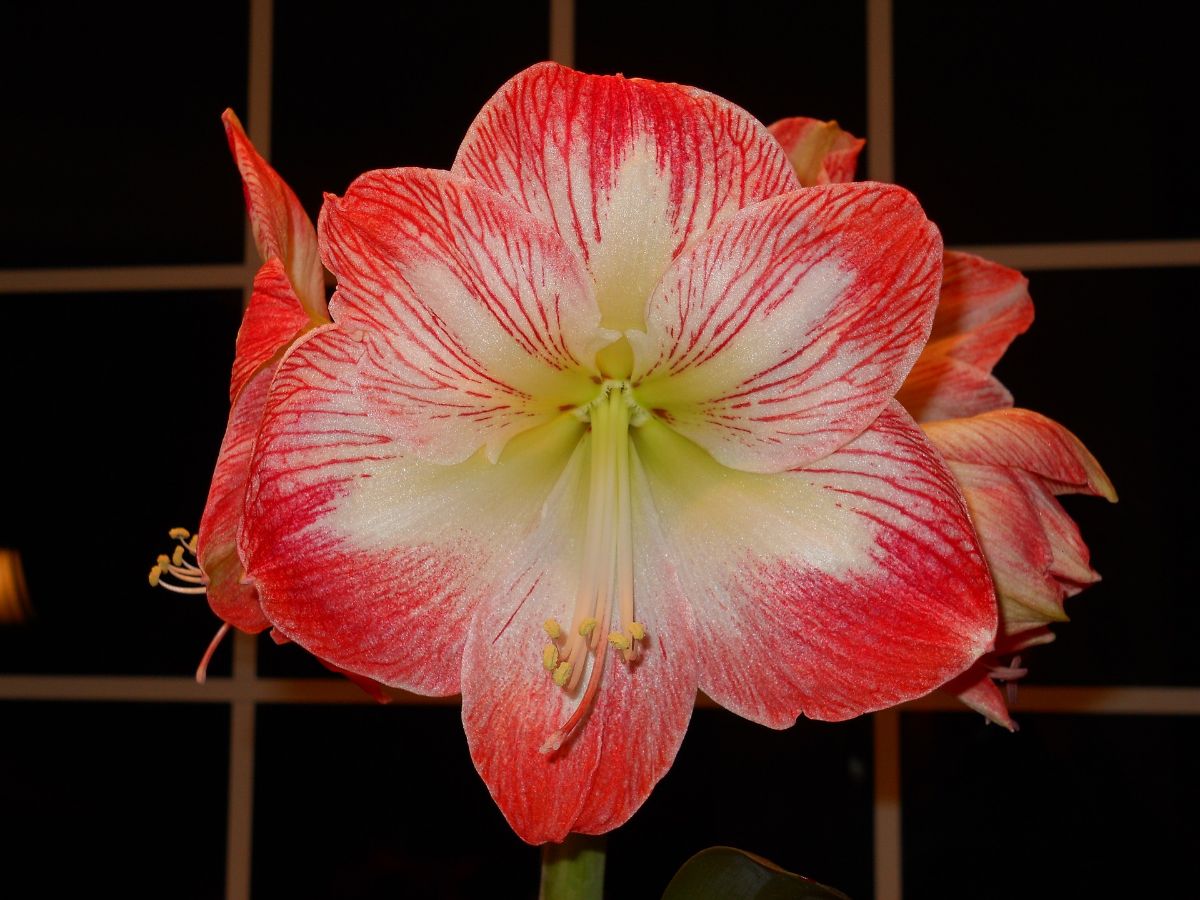
El Hippeastrum It is a bulbous plant known above all for its flowers, usually of irregular shades, which are bell-shaped. They are very colorful and that makes many use them to decorate the house, the entrances or the garden. But el Hippeastrum It is careful that you have to cover it so that it does not die easily (or not flourish).
If you want to have this plant in your home and enjoy its flowering, then you have to know what the care of the Hippeastrum.
How is the Hippeastrum

First of all, we are going to start by talking to you about the Hippeastruma plant native to Mexico, the Caribbean and southern America. There is another plant very similar to this one, which is called Amaryllis, but in reality they are totally different species (starting with the latter having its origin in southern Africa).
La Hippeastrum It is, as we have said before, a bulbous plant. It has a fairly large bulb, almost spherical, and with highly branched and fleshy roots. Stems and leaves emerge from it. These are linear and quite long, dark green in color.
Two to four flowers will sprout from the stem, which are quite large and mottled. They can be pink, red, white, etc. The vast majority of them (because there are some species that do not) exude a quite pleasant perfume.
Hippeastrum: the most important care

Now that you know a little more about the plant Hippeastrum, it is time to know what care it needs to grow properly and flourish.
When and how the bulbs are planted
We start with one of the main cares since, if it is not done well, the bulb may not respond and, therefore, not have a plant.
Experts recommend that, When planting the bulbs, they are kept in water, only the roots, for 12-24 hours. In this way, you are prompting the bulb to wake up, but it should not be completely wet because it could rot.
In addition, before planting it, you should also immerse it in a fungicidal liquid as this will avoid problems with fungi.
To plant it, you need a pot but not just any. Due to the size of the bulb, it is best to be pots of 18-20 centimeters, never less because they will need it. You should place one bulb per pot, although if you want to have several, then a planter (or a minimum 25-centimeter pot) is better.
The soil that you should use will be a mixture of peat, perlite, and fine sand. This will allow the substrate to have enough nutrients, but also to drain well to prevent the roots from spoiling.
You have to fill the pot with the earth and place the bulb to leave it buried only two thirds of its length.
Finally, you would have to water, although it is recommended that, this time, you do it with warm water.
Location and temperature
In this matter, it must be borne in mind that it is not the same when the pot is just planted and the bulbs are growing as when the flowers begin to appear.
In the first case, it is better to put it in an area where there is lighting, but without direct sun, and that it has a constant temperature of about 21 degrees. It is necessary to ensure that the substrate is always humid and that there are no drafts.
Now, when it begins to grow, the pot must be rotated about 45º every day, so that all the stems and leaves receive sunlight and do not bend in one direction.
At moment when the flowers are ready, you have to find another site, too lit, but where the temperature is about 16 degrees.
Keep in mind that if they exceed 30 degrees, the plant will suffer a lot. You can put it in the sun, but never in the peak hours and, whenever possible, spray the plant (but only the leaves, not the flowers) with warm water.
Irrigation
Irrigation of the Hippeastrum It must be abundant. He likes water, but not puddles. Therefore, when watering, you should try to be deep but without leaving any traces of water afterwards. As it approaches flowering, you will have to increase the amount of water.
Another point to deal with is humidity. This plant needs almost constant humidity that you can get by placing the pot on pebbles or similar and filling that part with water so that it almost covers the stones and the water evaporates, making it nourish the other.
Fertilizer
Compost is another important part. This only occurs in flowering season and always liquid, to mix with water. You have to throw it out every two weeks.
Pruning
Actually in this case there is no pruning as such. The plant will be alive in spring and summer, but the safest thing is that in autumn it will dry out, so you will have to remove the dry leaves and cut the stem when the cold arrives.
What happens to the bulbs when autumn comes

Like many other plants, when autumn comes the Hippeastrum it also disappears. But that does not mean that he dies, but that the bulb will be very alive and may sprout the following spring.
There are two things you can do with them:
- Leave them in the pot but do not water them and put a little compost on them (in this case some substrate or solid compost).
- Take them out of the pot, clean them and store them in a dark and cool place until spring when they are planted again.
Both options are fine.
Multiplication
If you want to have more plants Hippeastrum it is best to divide the plant itself. And it is that, if you notice, smaller ones may appear around the large bulb, with its own roots.
With care, you can separate them and plant them, although we already warned you that they will take 3-5 years to flower because before they have to become big as bulbs to really be a suitable plant.
Another way of reproduction is through seeds. These are planted in spring but, as you may have imagined, they will also take a few years to get ahead.
Plagues and diseases
In general, it is a very easy plant to care for, but it is not exempt from pests. The most common is the cottony mealybug.
As for diseases, the most normal thing is that they are related to shortage or excess of water and light.
Basically, with this care you will get the Hippeastrum is healthy and offers you lush and impressive flowers. Do you have any at home?